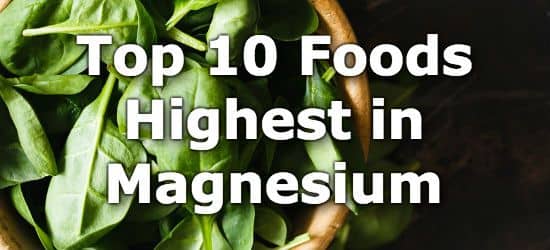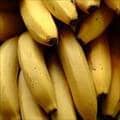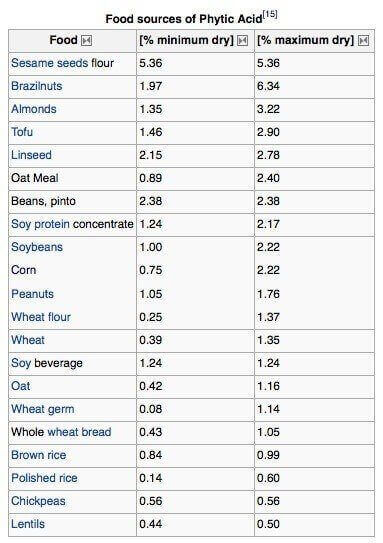Ayurvedic treatment for Chikungunya – arthritishttp://easyayurveda.com/2009/12/09/ayurvedic-treatment-for-chikungunya-arthritis/
This article is from the above blog. Its an excellent source for anything Ayurvedic. Its also a tremendous effort to explain the various benefits of our Ayurvedic system of medicine and lifestyle. It will be an excellent site for anyone to visit to know more about Ayurvedic systems, treatments and also for good health guidance.
Chikungunya outbreak has caused a lot of panic among people. It is a viral fever that spreads by the bite of infected Aedes mosquitoes. Most of the symptoms of chikungunya and dengue have resemblance. Though there is slight difference between chikungunya ; dengue. Severe, sometimes persistent, joint pain (arthritis), as well as fever and rash are the main characteristic features of Chikungunya. But in dengue, at later stages, the platelet count depletion sets in.
Chikungunya, in the acute phase, symptoms such as headache, fatigue, nausea, vomiting and muscle pain are also known to occur. Several varieties of viral infections are spread through droplets discharged into the atmosphere by the cough or sneezing of infected patients. It is seldom life-threatening.

However, the most painful aspect of chikungunya is the extended period of pain and swelling in the joints following the recovery from fever. This is due to the response of ones own immune system to parts of the virus which resemble the joint. This phenomenon is called as auto immune response. While the symptoms are less severe in younger patients, the older people and those with pre-existing arthritic tendency suffer badly.
Chikungunya and other similar viral infections have become very prevalent these days and are a grave cause for concern, affecting life of hundreds and thousands. The unbearable joint pain leaves many prostrated and unable to carry on with normal day t o day activities.
Arthritis associated with Chikungunya –
Post chikungunya arthritis affecting multiple joints can leave a person debilitated for a very long period of time.
The Allopathic treatment options are largely symptomatic for mitigating pain and fever using anti-inflammatory drugs along with rest. While recovery from chikungunya is the expected outcome, convalescence can be prolonged (up to a year or more), and persistent joint pain may require analgesic (pain medication) and long-term anti-inflammatory therapy.
Ayurveda, hass a great deal to offer by way of relief from Chikungunya & other forms of post-viral arthritis. The principle of Ayurvedic treatment in such acquired infections is of immuno-modulation. The medications and therapies help to modulate the immune response of the body against viral antigens which inadvertently affect the joints. Hence, in addition to the symptomatic relief which is very quickly felt, the immuno-modulation helps to reverse the inflammatory process as well as prevent tissue damage. This results in a faster recovery and a shortened convalescent period.
Ayurvedic treatment for Chikungunya – Line of treatment:
1. Preventive medicines to improve immunity. – These medicines which can be taken to prevent the chikungunya treatment or at least reduce its severity.
2. Medicines to reduce fever and bring down muscle pain, headache, nausea, fatigue and rash – that is, small red spots all over the body.
3. Medicines to relieve muscle and joint pains.
4. Rejuvenation medicines that are administered once after the disease is relieved. This is to restore body strength and immunity. These medicines give energy to the patient to get on with day to day activities after recovery.
Warning: Before trying any of these medicines, consult your doctor directly. I do not guarantee that these will work. These can be taken along with your allopathic treatment.
Please consult your Ayurveda doctor before trying any of below medicine
All the medicines that I have mentioned below are easily available in any local Ayurveda store or at shimply.com, eayur.com etc online Ayurveda shopping websites.
A. Preventive medicines and remedies against Chikungunya:
These medicines do not offer any guarantee that you will not get chikungunya. But your body will be better prepared to fight this disease.
1. Nimbadi Kashayam tablet (AVN company)-
Dose for adults – 2 tablets 2 times a day after food.
Dose for children above 7 years of age – 1 tablet 2 times a day after food.
2. Trishun tablet (Zandu company) –
Dose for adults – 2 tablets 2 times a day after food.
Dose for children above 7 years of age – 1 tablet 2 times a day after food.
3. Panchanimbadi Vati tablet (AVN company)
Dose for adults – 2 tablets 2 times a day after food.
Dose for children above 7 years of age – 1 tablet 2 times a day after food.
Trishun with Nimbadi Kashayam tablet
OR
Trishun with Panchanimbadi vati tablet – is advised as a preventive medicine combination.
The above 2 can be continued for up to 1 month time.
B. Ayurvedic medicines to reduce Chikungunya fever:
The below medicines are targeted to reduce fever.
Amritarishta (liquid) – 15 ml, mixed with 15 ml of water, 2 times a day. This is not recommended in diabetic people.
Trishun tablet
Dose for adults – 2 tablets 2 times a day after food.
Dose for children above 7 years of age – 1 tablet 2 times a day after food.
Sanjivani Vati tablet –
Dose for adults – 2 tablets 2 times a day after food.
Dose for children above 7 years of age – 1 tablet 2 times a day after food.
Amrutottaram kashayam tablet –
Dose for adults – 2 tablets 2 times a day after food.
Dose for children above 7 years of age – 1 tablet 2 times a day after food.
Combinations –
Sanjivani with Trishun + Amritaristhta
Amrutottaram with Sanjivani and Trishun
They can be continued up to 4 – 6 weeks of time, based on your doctor’s advice.
C. Ayurvedic medicines and remedies to relieve pain and inflammation
R compound tablet – 2 tablets 2 – 3 times a day after food.
Shallaki capsule – 1 – 2 capsules – 1 -2 times a day after food (Excess of this may cause stomach irritation in some people)
Sallaki MR tablet – 1 – 2 tablets 1- 2 times a day after food.
Yogaraja Guggulu
Vatari Guggulu etc.
Any one or two among above can be continued for up to 2 – 4 months time, with gradual decrease in dosage, as per your Ayurvedic doctor’s advice.
D. Ayurvedic Medicines to restore energy after the fever is relieved:
Ashwagandharishta, Amrutarishta, Balarishta – any one among the above – 15 ml, mixed with 15 ml of water, 2 times a day after food. (Cannot be administered to diabetic people)
Swamala compound – 1 teaspoon 2 times a day (Cannot be administered to diabetic people)
Ashwagandha capsule, Shilajit capsule, Shatavari capsule etc.
Oils and liniments to apply externally over joints to reduce pain:
Please note that while you have fever, you cannot apply oils to the joints. But liniments can be applied to relieve pain. Liniments are oil + volatile prinicples. After application, they evaporate quickly. The below mentioned liniments are good to apply 4 – 5 times a day for 4 – 6 weeks time.
Some good liniments are –
Arnopen liniment
Arthorub liniment
Myostaal liniment
Rhukot liniment
Rumalaya liniment etc.
Oils for application –
These oils can be applied after the fever is completely relieved. These oils improve joint strength and relieve pain.
Mahanarayana taila
Kottamchukkadi taila
Mahamasha taila
Balaswagandhadi taila
Vishagarbha taila
Rejuvenative Ayurvedic medicines for Chikungunya joint care:
Especially in old people, chikungunya may cause permanent joint pain and difficulty in walking. For them, below medicines help to strengthen joints. These can be started during the fever and can be continued for up to 3 – 4 months of time, with gradual decrease in dose.
1. Ksheerabala 101 drops – 10 drops, 2 times a day after food.
2. Ksheerabala capsule -1 capsule 2 – 3 times a day after food.
3. Gandha tailam drops – 10 drops 2 times a day after food.
4. Lakshadi guggulu tablet – 2 tablets 2 -3 times a day after food.
5. Gandha tailam capsule -1 capsule 2 times a day after food.
Beware of false promises:
As you may have noticed any tablet or capsule that I have enlisted above does not cost you more than 4 – 6 rupees per piece.
Some fake Ayurvedic doctors may push you to buy costly Swarna Bhasma, Heera Bhasma for thousands of rupees to relieve this. They may or may not work, but they are not necessary.
Home remedies for chikungunya:
Chikungunya outbreak has caused a lot of panic among people. It is a viral fever that spreads by the bite of infected Aedes mosquitoes. Most of the symptoms of chikungunya and dengue have resemblance. Though there is slight difference between chikungunya ; dengue. Severe, sometimes persistent, joint pain (arthritis), as well as fever and rash are the main characteristic features of Chikungunya. But in dengue, at later stages, the platelet count depletion sets in.
Chikungunya, in the acute phase, symptoms such as headache, fatigue, nausea, vomiting and muscle pain are also known to occur. Several varieties of viral infections are spread through droplets discharged into the atmosphere by the cough or sneezing of infected patients. It is seldom life-threatening.

However, the most painful aspect of chikungunya is the extended period of pain and swelling in the joints following the recovery from fever. This is due to the response of ones own immune system to parts of the virus which resemble the joint. This phenomenon is called as auto immune response. While the symptoms are less severe in younger patients, the older people and those with pre-existing arthritic tendency suffer badly.
Chikungunya and other similar viral infections have become very prevalent these days and are a grave cause for concern, affecting life of hundreds and thousands. The unbearable joint pain leaves many prostrated and unable to carry on with normal day t o day activities.
Arthritis associated with Chikungunya –
Post chikungunya arthritis affecting multiple joints can leave a person debilitated for a very long period of time.
The Allopathic treatment options are largely symptomatic for mitigating pain and fever using anti-inflammatory drugs along with rest. While recovery from chikungunya is the expected outcome, convalescence can be prolonged (up to a year or more), and persistent joint pain may require analgesic (pain medication) and long-term anti-inflammatory therapy.
Ayurveda, hass a great deal to offer by way of relief from Chikungunya & other forms of post-viral arthritis. The principle of Ayurvedic treatment in such acquired infections is of immuno-modulation. The medications and therapies help to modulate the immune response of the body against viral antigens which inadvertently affect the joints. Hence, in addition to the symptomatic relief which is very quickly felt, the immuno-modulation helps to reverse the inflammatory process as well as prevent tissue damage. This results in a faster recovery and a shortened convalescent period.
Ayurvedic treatment for Chikungunya – Line of treatment:
1. Preventive medicines to improve immunity. – These medicines which can be taken to prevent the chikungunya treatment or at least reduce its severity.
2. Medicines to reduce fever and bring down muscle pain, headache, nausea, fatigue and rash – that is, small red spots all over the body.
3. Medicines to relieve muscle and joint pains.
4. Rejuvenation medicines that are administered once after the disease is relieved. This is to restore body strength and immunity. These medicines give energy to the patient to get on with day to day activities after recovery.
Warning: Before trying any of these medicines, consult your doctor directly. I do not guarantee that these will work. These can be taken along with your allopathic treatment.
Please consult your Ayurveda doctor before trying any of below medicine
All the medicines that I have mentioned below are easily available in any local Ayurveda store or at shimply.com, eayur.com etc online Ayurveda shopping websites.
A. Preventive medicines and remedies against Chikungunya:
These medicines do not offer any guarantee that you will not get chikungunya. But your body will be better prepared to fight this disease.
1. Nimbadi Kashayam tablet (AVN company)-
Dose for adults – 2 tablets 2 times a day after food.
Dose for children above 7 years of age – 1 tablet 2 times a day after food.
2. Trishun tablet (Zandu company) –
Dose for adults – 2 tablets 2 times a day after food.
Dose for children above 7 years of age – 1 tablet 2 times a day after food.
3. Panchanimbadi Vati tablet (AVN company)
Dose for adults – 2 tablets 2 times a day after food.
Dose for children above 7 years of age – 1 tablet 2 times a day after food.
Trishun with Nimbadi Kashayam tablet
OR
Trishun with Panchanimbadi vati tablet – is advised as a preventive medicine combination.
The above 2 can be continued for up to 1 month time.
B. Ayurvedic medicines to reduce Chikungunya fever:
The below medicines are targeted to reduce fever.
Amritarishta (liquid) – 15 ml, mixed with 15 ml of water, 2 times a day. This is not recommended in diabetic people.
Trishun tablet
Dose for adults – 2 tablets 2 times a day after food.
Dose for children above 7 years of age – 1 tablet 2 times a day after food.
Sanjivani Vati tablet –
Dose for adults – 2 tablets 2 times a day after food.
Dose for children above 7 years of age – 1 tablet 2 times a day after food.
Amrutottaram kashayam tablet –
Dose for adults – 2 tablets 2 times a day after food.
Dose for children above 7 years of age – 1 tablet 2 times a day after food.
Combinations –
Sanjivani with Trishun + Amritaristhta
Amrutottaram with Sanjivani and Trishun
They can be continued up to 4 – 6 weeks of time, based on your doctor’s advice.
C. Ayurvedic medicines and remedies to relieve pain and inflammation
R compound tablet – 2 tablets 2 – 3 times a day after food.
Shallaki capsule – 1 – 2 capsules – 1 -2 times a day after food (Excess of this may cause stomach irritation in some people)
Sallaki MR tablet – 1 – 2 tablets 1- 2 times a day after food.
Yogaraja Guggulu
Vatari Guggulu etc.
Any one or two among above can be continued for up to 2 – 4 months time, with gradual decrease in dosage, as per your Ayurvedic doctor’s advice.
D. Ayurvedic Medicines to restore energy after the fever is relieved:
Ashwagandharishta, Amrutarishta, Balarishta – any one among the above – 15 ml, mixed with 15 ml of water, 2 times a day after food. (Cannot be administered to diabetic people)
Swamala compound – 1 teaspoon 2 times a day (Cannot be administered to diabetic people)
Ashwagandha capsule, Shilajit capsule, Shatavari capsule etc.
Oils and liniments to apply externally over joints to reduce pain:
Please note that while you have fever, you cannot apply oils to the joints. But liniments can be applied to relieve pain. Liniments are oil + volatile prinicples. After application, they evaporate quickly. The below mentioned liniments are good to apply 4 – 5 times a day for 4 – 6 weeks time.
Some good liniments are –
Arnopen liniment
Arthorub liniment
Myostaal liniment
Rhukot liniment
Rumalaya liniment etc.
Oils for application –
These oils can be applied after the fever is completely relieved. These oils improve joint strength and relieve pain.
Mahanarayana taila
Kottamchukkadi taila
Mahamasha taila
Balaswagandhadi taila
Vishagarbha taila
Rejuvenative Ayurvedic medicines for Chikungunya joint care:
Especially in old people, chikungunya may cause permanent joint pain and difficulty in walking. For them, below medicines help to strengthen joints. These can be started during the fever and can be continued for up to 3 – 4 months of time, with gradual decrease in dose.
1. Ksheerabala 101 drops – 10 drops, 2 times a day after food.
2. Ksheerabala capsule -1 capsule 2 – 3 times a day after food.
3. Gandha tailam drops – 10 drops 2 times a day after food.
4. Lakshadi guggulu tablet – 2 tablets 2 -3 times a day after food.
5. Gandha tailam capsule -1 capsule 2 times a day after food.
Beware of false promises:
As you may have noticed any tablet or capsule that I have enlisted above does not cost you more than 4 – 6 rupees per piece.
Some fake Ayurvedic doctors may push you to buy costly Swarna Bhasma, Heera Bhasma for thousands of rupees to relieve this. They may or may not work, but they are not necessary.
Home remedies for chikungunya:
- A decoction or herbal tea prepared with neem powder + ginger – once or twice a day.
- Herbal tea prepared with neem powder + Ashwagandha powder + ginger
- Tulsi herbal tea
http://easyayurveda.com/2009/12/09/ayurvedic-treatment-for-chikungunya-arthritis/






































